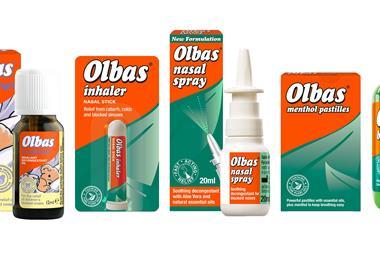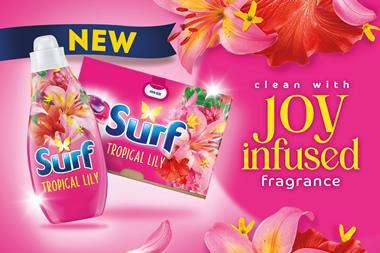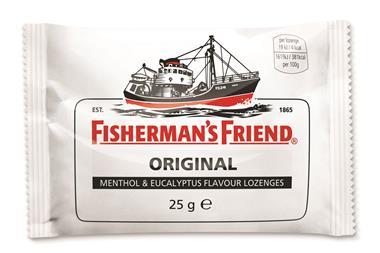Batteries offer great profits on relatively small sales, and with companies investing more in packaging it’s simple for retailers to offer a core range
In the switched on, amped up, gadget-obsessed modern world, it’s all too easy to forget the importance of the humble battery. Until your child’s favourite toy or your household’s remote control runs out of juice, that is.
The battery market is worth £315m in the UK, according to Nielsen. And while TNS reports that the market is stable rather than soaring it grew by a fairly meagre 3.1% in value over the past year batteries still represent a must-stock category for serious c-stores.
Research from Mintel shows that some consumers now watch out for battery promotions in the multiples and then stock up for their household but, for the rest of us, when the power runs out it’s time to hot-foot it to the local shop.
retailer’s view Tony Scott
“Batteries are a must-stock for us. Sometimes it’s a planned purchase, but it’s often an on-demand distress buy, and obviously we’re there to serve that eventuality.
“We offer a full range AAs and AAAs are obviously the core range but we also do Cs, Ds and Es, plus the ‘ultras’ for digital cameras and the like. In the winter we also stock the large batteries for bicycle lamps. As a rural area it’s important we offer everthing, because that way we get a bigger share of shoppers’ spend.
“Duracell is a mainstay for us, but we now also do Panasonic, too. We’ve tried budget products before, but it’s not really our main thrust. I guess they do well for some people.
“This time of year, as the nights get darker earlier, demand does get greater so we focus on the deals provided by manufacturers and put them in bins to ensure a greater sales uplift.”
Tony Scott, Scotts Budgens. Bampton, Oxfordshire
“Customers will always need batteries everybody buys them, especially since these days we all seem to have six or seven remote controls on the go,” explains Panasonic Energy UK sales manager Tim Clark.
Because of their must-have status around the home, c-stores are in a great position to capitalise on the distress nature of the purchase. “Nearly half of all battery buyers are governed by an immediate need,” adds Energizer marketing manager Emily Smith. “That means location rather than type of retail outlet will influence the purchasing decision. This is reflected in the fact that 46% of shoppers buy batteries on impulse, and this makes them an important category for all impulse channels.”
Clark says that because batteries don’t take up much space in-store, they could be the most profitable product per square centimetre of shelf space. In fact, according to research by Energizer, the profit from selling one four-pack of standard alkaline batteries is equivalent to that of selling 17 chocolate bars.
It’s an opinion echoed by Vince Armitage, divisional vice-president of Varta Batteries UK. “C-stores aren’t going to stock a massive range of non-food items,” he says. “They want something that’s profitable, easy to stock, used every day, and isn’t a big-ticket product. That’s where batteries fit into the mix. Batteries are cheap in terms of outlay, but the margins are high that’s got to be appealing.”
As with any convenience retail category, the key to creating a high-powered battery offer is simply working out your local customers’ needs and then meeting them.
For the battery market, this process begins by making sure you’re offering shoppers the product sizes they require. “When we go battery shopping the first thing we look for is the correct size,” explains Armitage. “It’s a challenge for any consumer to explain what size of battery they want without using their hands!”
In terms of which sizes to stock, all the experts agree that as AA and AAA batteries make up 80% of the market, they’re the ideal core store selection. Stocking more esoteric sizes depends a lot on the location of your shop and individual needs of your customers. For instance, stores near camp sites may need to offer bigger batteries for torches or stereos.
It’s also worth remembering that stores which attract older consumers could do well from offering cell batteries the kind that power home health items such as blood pressure monitors and hearing aids. Although this market accounts for only 5% of market share, according to Nielsen, it’s reporting 35% growth overall.
Clark says that stocking an entry-level product alongside a premium product will cover most bases. This could mean a good entry-level zinc or alkaline variant, for low-level energy consumption in alarm clocks etc, plus something with a more prestige level of power for heavy-duty gadgets.
For Panasonic, the premium focus is on Evolta, the new name for Evoia. Evolta batteries are recognised by Guinness World Records as being the world’s number one long-lasting AA alkaline battery a fact that the brand is promoting heavily on-pack and at point of sale.
display tips Category management
Keep it simple. Some 40% of potential battery purchases are lost because of confusion, so a logical, easy-to-shop display is paramount
Make batteries visible. Half of all battery purchases are prompted by what customers see in-store, so it pays to ensure that batteries are clearly visible. Ideally, locate them in two different areas at the till as well as on shelf
Include a wide range. Stock the right range including all five sizes of battery AA, AAA, C, D and 9V. Always site AA batteries at eye-level
Be attention-seeking. Grab shoppers’ attention with shelf wobblers and other in-store pos material.
Promotional activity is also being built around Mr Evolta, a robot who has already managed to climb the Grand Canyon and run around the Le Mans racetrack. After all that effort, appearing on pos in c-stores should be a reasonably simple task.
Panasonic’s focus on the world record-breaking nature of its products is proof that, after size, power and durability are also essential drivers for shoppers in this category. Because the battery market is device-driven, new products have to meet the demands of whatever high-powered electronic device is currently popular in UK households.
“The truth is that batteries are not an item you enjoy buying, or enjoy using you get the pleasure from the device itself. It’s a lot like the petrol you buy to run a car,” says Armitage.
Following this analogy, the new generation of household gadgets, such as digital cameras and handheld games consoles, are more like petrol-hungry sports cars than economical hatchbacks.
“The UK has firmly established itself as a nation of gadget lovers,” says Smith. “This means consumers are demanding more long-lasting batteries that represent value for money in high-drain devices, and signifies continued growth within the high-performance sector.”
Energizer is innovating in the category with its new Energizer High Tech product, an alkaline battery that has been formulated to last up to 40% longer than existing Energizer Ultra+ batteries. Across the Energizer range the packs have been designed to signpost to shoppers the best product to go for depending on their power needs.
This high level of on-pack information, common across the battery sector, could be part of the reason why customers spend a full minute in front of the battery fixture far longer than when buying groceries.
“Consumers are confused by the battery category,” admits Smith. “They are still unclear about which battery is suitable for which device and are looking for guidance from manufacturers. Our approach provides a simple category solution to help consumers and retailers better understand battery performance and make informed decisions.”
On the shop floor, promotions as well as power performance can tip the balance towards a sale. Helping customers feel that they’re getting a bargain is a vital way to seal the deal. “Depending on space in the store, stocking multipacks is a good way to encourage consumers to trade-up to a bigger pack size because they offer better value for money,” says Clark.
In its research, Mintel describes the UK battery sector as an outright duopoly. According to its report, two brands Duracell and Energizer have the market sewn up between them, with Duracell the market leader and Energizer the best-selling rechargeable brand.
These two brands account for 77% of value sales and 98% of advertising expenditure, while private label products (responsible for approximately one in seven batteries sold) have declined. With this kind of formidable track record, how can other companies, even those that are well-respected around the world, compete in the UK market?
Armitage believes that beating the big boys on price, while still offering a durable, dependable product, is the way to boost sales of Varta. “Today, value for money is more important than ever for shoppers,” he says.
top 10 Battery-powered products in the UK
1.Remote control
2.Clock
3.Digital camera
4.Torch
5.Smoke alarm
6Watch
7.Children’s toy 8.Personal music player 9.Gaming console accessories
10. Nintendo
Wii remote Source: Energizer
“That’s why the second, third and fourth ranking brands are being given a chance. People are willing to save 50p or a pound by buying a battery that they know is going to work well, but which isn’t one of the big brands. The fact that consumers are demanding better value is making the whole market work much harder.”
Armitage says that the convenience nature of many battery purchases also leads to more niche brands being given a boost. “Batteries are what I call a ‘dammit’ purchase. As in ‘dammit, I need more batteries’. If you’re pulling into a garage forecourt at 5am are you really going to leave if you’re not provided with the top two?”
This year Varta launched new additions to its UK range including Tri-Energy alkaline batteries in three performance levels: yellow, blue and red.
While the yellow batteries are designed to prolong the lifespan of low-current devices such as alarm clocks and remote controls, blue gives maximum energy to power-hungry gadgets like portable stereos. Meanwhile, red is specially aimed at precision products like MP3 players and handheld games.
Varta is a best-seller in several European markets, but Armitage understands that to drive market-share over here in the UK, he has to offer individual solutions to the convenience channel.
“With some grocers these days it’s like Groundhog Day,” he says. “Wherever you go, retailers have the same products, prices and promotions. We treat independents differently and come up with specific trade activity for the channel. It’s not a cookie-cutter approach there’s the opportunity to be different and not just for the sake of it, but because it’s profitable.”
While brands such as Varta are looking to capture customers whose brand loyalty is wavering, Clark says that building trust in brands is still the name of the game in the long-run. “Consumers who are looking for batteries tend to switch only if they trust the brand,” he says. “Our research suggests that Panasonic is a brand that consumers trust.”
Renewable energy
While traditional alkaline cell batteries are still market leaders in terms of volume and value sales, there’s also evidence rechargeable batteries are gaining ground, with consumers seeking value for money alongside a product that’s better for the environment and causes less waste. So should they really be given a space in your store?
“It depends on the store format,” says Clark. “For smaller stores space is at a premium so it probably won’t work. For bigger stores potentially a small range would be suitable.”
He recommends Evolta rechargeable batteries as an entry point into the sector. Because they are charged on the factory floor, the product chimes with convenience shoppers who won’t want to wait to charge them at home.
“Rechargeable batteries have improved so much down the years,” he adds. “Rechargeables used to lose power even if they weren’t used, so they’d end up flat after a while. These days they hold 85% of their charge.”
Technical trouble
For a relatively low-tech product, batteries have built a reputation for featuring some fairly high-tech specifications. But does anyone outside of the self-confessed battery geeks (accounting for 25% of the market, according to Mintel) understand talk of ‘high density anodes’?
Maybe not, since Mintel reckons 60% of battery buyers seem ‘ignorant’ and even ‘actively disengaged’ from the market for new batteries. That could be why big brands have concentrated more on price promotion than advertising in the past year.
Varta’s Vince Armitage says: “People who visit c-stores don’t want to feel engaged with the market. They just want to grab the batteries that they need as quickly as possible and get on with their lives!”
No time is this more true than at Christmas, a busy period for the big battery brands, as consumers stockpile batteries in order to avoid expensive kids’ toys running out of steam halfway through Boxing Day. And that means retailers also have the opportunity to cash in with their battery offer.
“The pre-Christmas sales period represents the biggest profit opportunity for retailers, accounting for one-third of all battery sales,” says Energizer managing director Nick Powell.
The brand is hoping that encouraging shoppers to give something back at Christmas will boost sales as well as raise cash for charity. For every promotional pack of Energizer batteries sold in-store until the end of November, it will donate 5p to Help for Heroes, in a push to raise £10,000 to support UK armed forces.
“It’s a very natural partnership,” adds Powell. “The army has been using Energizer batteries over the past few years and we are proud to help rally the support of retailers and consumers to get behind our heroes.”
Meanwhile, a survey by Panasonic has highlighted how batteries can be an important last-minute buy for friends and relatives delivering gifts to the family. The survey revealed that a quarter of consumers received a battery-operated gift but no batteries, while 10% experienced a serious festive battery failure. The results also suggest that three-quarters of stressed Christmas shoppers actually welcome an in-store prompt to stock up.
“By simply prompting each customer to find out whether they also need batteries, retailers could see a substantial rise in battery sales,” says Panasonic’s Tim Clark.
“Siting the battery fixture prominently, or using POS to highlight batteries at point of purchase will also increase impulse purchases,” he adds.
However, it could be that technological advances will one day be the undoing of the battery market. It’s often assumed that batteries will be a must-stock for most retailers far into the future, but Mintel has noted that newer technology, such as the iPad, avoids batteries altogether by being charged direct from the mains or a laptop. With this in mind, is there a future for the category in the long-term?
Clark believes there is. “It’s true that top-end products can be charged from a computer and now have integrated battery technology. But still, the bulk of sales for c-stores will be in traditional batteries,” he asserts.
Armitage also believes there’s life in the battery sector yet especially when, if you look beyond shiny gadgets, new products are driving the future market.
“Devices change all the time,” he says. “For instance, JML recently brought out a listening device for the hard of hearing that uses a button cell battery. Products like that instantly create new demand.”
He even suggests that batteries may be a way for retailers to meet the challenges that new legislation is creating on the shop floor.
“When you walk into a c-store the big display is the cigarette gantry and that’s now under question,” he says.”What happens when and if cigarettes disappear from stores because of new laws? I’m talking far into the future, of course, but batteries could fill that part of the gantry that’s left unused.”
Elsewhere, manufacturers are bringing in innovative products to charge the new generation of smart phones, tablets and other high-tech wizardry. For example, Duracell’s new 1800mAh portable USB Charger is designed to help consumers power up smart phones on-the-go to provide up to five hours (depending on the device) of extra time to chat, text, listen to music or browse the internet.
“The opportunity to use a Duracell product to recharge devices with built-in batteries means that the brand continues to lead the marketplace, and remains to the fore in the minds of consumers,” says Duracell business leader Leigh Tomlinson.
In a wired-in world it’s another way that c-store retailers can offer consumers a convenient solution when the power runs out. n






















No comments yet